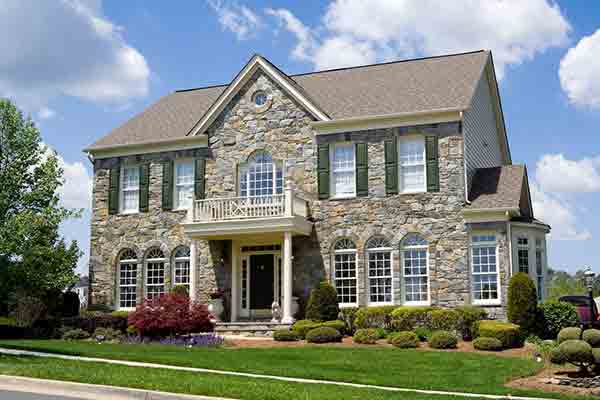The Art and Science of Castle Construction
Castle construction is a fascinating subject that intertwines history, architecture, and engineering. From the formidable medieval fortresses of Europe to the majestic structures of Asia and the Americas, castles have long been symbols of power, wealth, and strategic acumen. This article delves into the complexities of castle construction, exploring the historical evolution, architectural features, construction techniques, and cultural significance of these grand structures.
Historical Evolution of Castles
Castles originated during the early medieval period, primarily as fortified residences for nobility and military strongholds. The concept of a castle evolved from the simple wooden motte-and-bailey designs of the 9th and 10th centuries to the elaborate stone fortresses of the 12th and 13th centuries.
Early Motte-and-Bailey CastlesThe motte-and-bailey castle is considered the earliest form of castle construction. The motte was a raised earthwork mound topped with a wooden or stone keep, while the bailey was an enclosed courtyard surrounded by a protective ditch and palisade. These structures were relatively simple but effective in providing defensive capabilities and a central place of residence.
Stone CastlesBy the 11th century, the wooden components of motte-and-bailey castles were increasingly replaced with stone, resulting in more durable and formidable structures. Stone castles featured thicker walls, more sophisticated gatehouses, and complex internal layouts. The shift to stone was driven by the need for better defense against increasingly advanced siege techniques.
Concentric CastlesThe development of concentric castles in the 12th and 13th centuries marked a significant advancement in castle design. These castles featured multiple layers of defensive walls, with each layer providing a more secure stronghold. The concentric design allowed for more effective defense and control over the surrounding area.
Architectural Features of Castles
The architectural features of castles were carefully designed to enhance both defense and comfort. Here are some of the key elements commonly found in castles:
KeepThe keep was the central and most fortified part of the castle. It served as the residence of the lord and his family and was the last line of defense during a siege. Keeps were often square or rectangular in shape and featured thick walls and narrow windows.
Curtain WallsSurrounding the keep were the curtain walls, which were high and thick stone walls that provided protection against attackers. These walls were often equipped with battlements, crenellations, and arrow slits to enhance defensive capabilities.
GatehouseThe gatehouse was the primary entrance to the castle and was heavily fortified to prevent unauthorized entry. It typically included features such as a drawbridge, portcullis (a heavy grilled door), and a gatehouse tower for added security.
MoatMany castles were surrounded by a moat, a deep and wide ditch filled with water. The moat served as an additional defensive barrier, making it more difficult for attackers to approach the castle walls.
TowersTowers were strategically placed along the curtain walls and provided elevated vantage points for defenders. They were often used as watchtowers, storage rooms, or living quarters.
Great HallThe great hall was the primary communal space within the castle. It was used for dining, gatherings, and ceremonies. The great hall was typically a large, open room with a high ceiling and a central hearth.
ChapelMany castles included a chapel for religious services and ceremonies. The chapel was often located within the castle complex, providing a place for spiritual activities.
Construction Techniques
Castle construction was a complex process that required careful planning and skilled craftsmanship. Several techniques and materials were employed to build these impressive structures.
MaterialsThe primary materials used in castle construction were stone, timber, and sometimes brick. Stone was preferred for its durability and strength, while timber was used for scaffolding, temporary structures, and internal features. Brick became more common in later periods, especially in regions where stone was less available.
FoundationThe foundation of a castle was crucial for its stability. Builders would excavate and prepare the ground, often digging deep trenches to lay the foundation stones. In some cases, wooden piles were driven into the ground to provide additional support.
Stone Cutting and MasonryStone cutting and masonry were essential skills in castle construction. Stones were carefully cut and shaped to fit together seamlessly, ensuring the strength and durability of the walls. Masonry techniques included the use of mortar to bind the stones and create a solid structure.
Construction of Walls and TowersBuilding the walls and towers involved laying the foundation stones, constructing the walls in layers, and incorporating defensive features such as arrow slits and battlements. The construction process was often slow and labor-intensive, requiring skilled masons and a large workforce.
Interior ConstructionOnce the outer walls and towers were complete, builders focused on the interior of the castle. This included constructing the keep, great hall, chapel, and other rooms. Interior construction also involved the installation of essential features such as fireplaces, staircases, and wooden floors.
Cultural Significance
Castles were more than just military fortifications; they played a significant role in the social, political, and cultural life of their time:
Symbols of PowerCastles were symbols of power and authority, representing the wealth and influence of their owners. They served as administrative centers, where lords and nobles conducted their affairs and exercised control over their domains.
Centers of AdministrationCastles often functioned as administrative centers, where local governance, legal proceedings, and economic activities took place. They were crucial in maintaining order and managing resources within their territories.
Cultural and Social HubsCastles were centers of social and cultural activities, hosting feasts, tournaments, and ceremonies. They were also venues for artistic and intellectual pursuits, including music, literature, and education.
Tourism and PreservationToday, many castles are preserved as historical landmarks and tourist attractions. They provide valuable insights into medieval life and architecture, offering visitors a glimpse into the past.
Conclusion
Castle construction is a testament to human ingenuity and the desire to create lasting symbols of power and prestige. The evolution of castle design, from the simple motte-and-bailey structures to the intricate concentric fortresses, reflects advancements in military strategy, architectural innovation, and societal values. The careful planning and craftsmanship involved in building these majestic structures underscore their significance as both defensive works and cultural icons. As we explore the legacy of castle construction, we gain a deeper appreciation for the historical and architectural heritage that continues to captivate and inspire us.












Leave a Reply